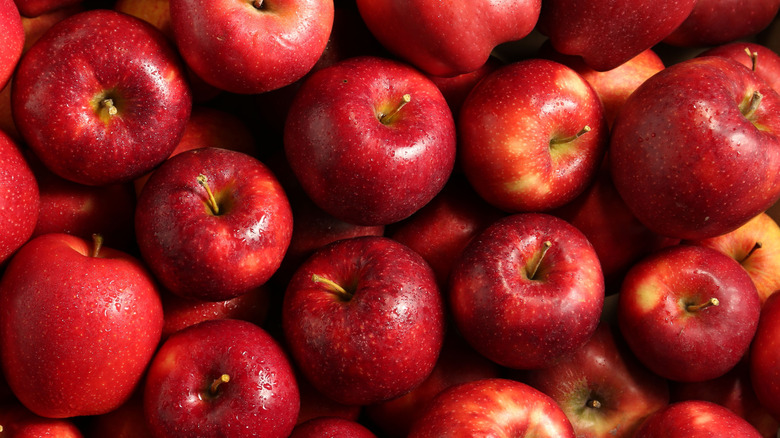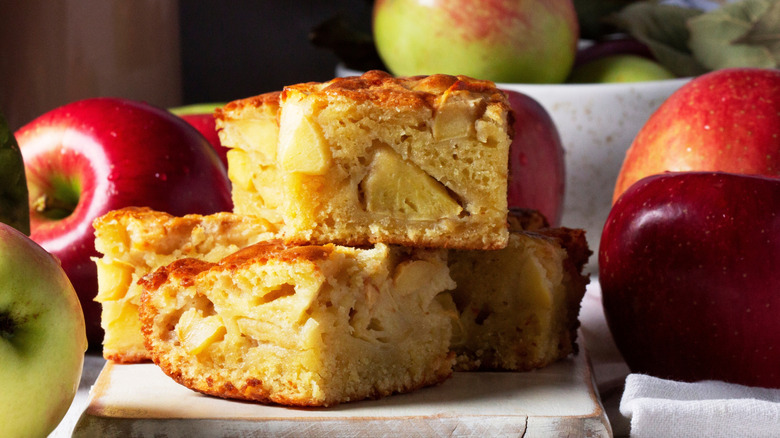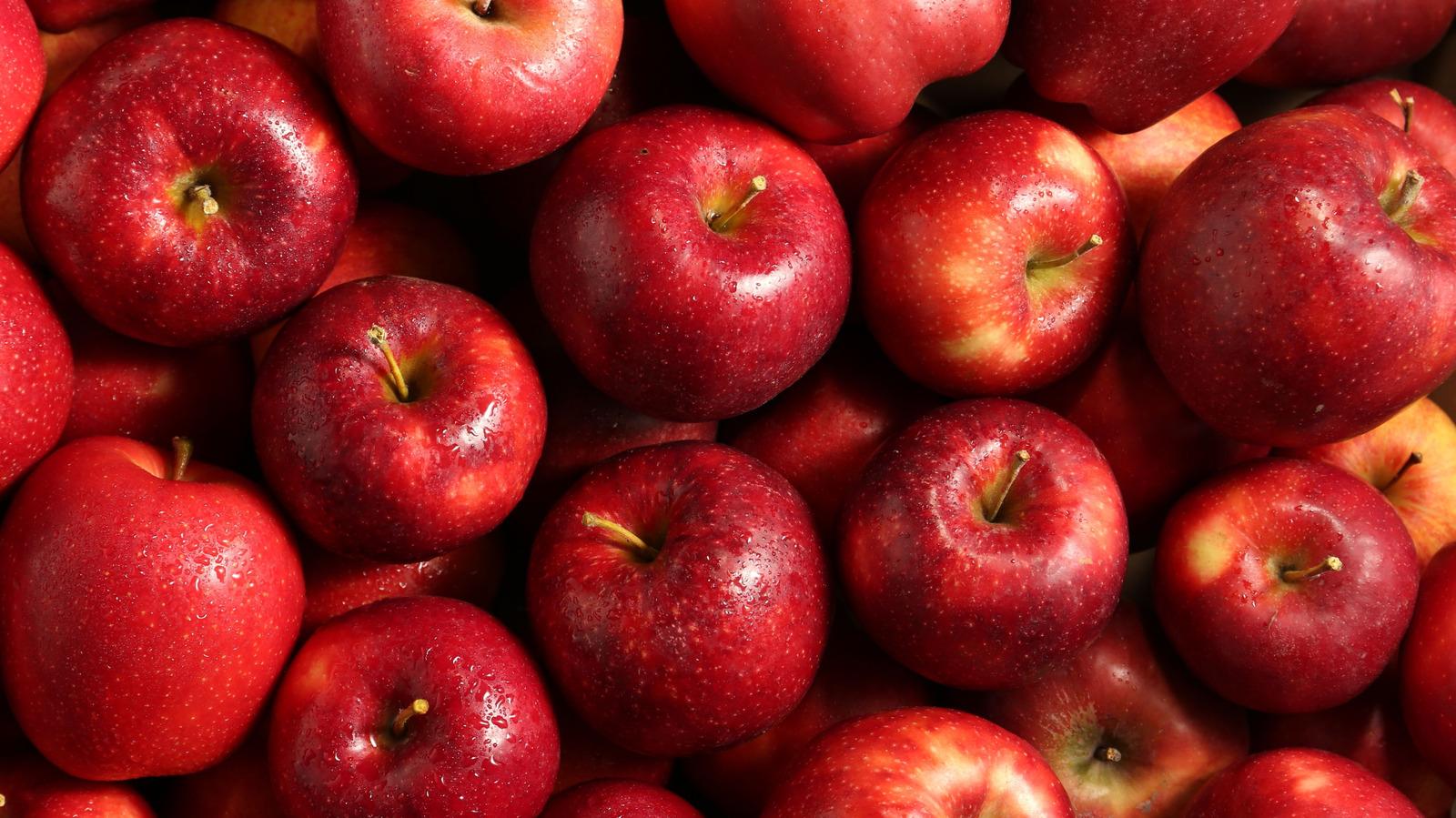
New Africa/Shutterstock
Biting into an apple and being met with a bland, tasteless piece of fruit is the ultimate letdown. You were expecting a sweet, crisp, and juicy explosion of flavor, but all you tasted was disappointment. Thankfully, this can be avoided by knowing how to differentiate between various red apple varieties and the traits they're known for.
Some varieties are tart or crisp, whereas others have a softer, creamier, more mealy texture. When it comes to the sweetest apple of the lot, the Fuji variety takes the throne. The sweetness of an apple is determined by a measurement known as the Brix scale. The higher the number on the scale, the sweeter the fruit, and Fuji apples can go up to 18 on the scale. In comparison, the majority of other apple varieties average anywhere from 12 to 14.
That said, if you like your apples sweet and can't get your hands on a Fuji apple, the Kiku variety is your next best bet. These are a close second to Fuji, going up to 17 on the Brix scale. In case you can't find those either, look out for the Envy, Red Delicious, Honeycrisp, and Gala varieties. These rank high on the Brix scale, and though they don't have the sugary crunch of the Fuji variety, they still have a good amount of sweetness and burst with flavor.
Dishes where Fuji apples shine

Danilova Janna/Shutterstock
Originating in Japan in the 1930s, Fuji apples are named for Fujisaki, a Japanese town near the orchard where the fruit was first grown. It is a cross between the Red Delicious variant and the Virginia Ralls Janet. They have red and yellowish skin, pale white flesh, and are firm to the touch. Fuji apples are extremely sweet and honey-like with notes of citrus, and provide a crisp, coarse, and crunchy mouthfeel, which makes them a great snack on their own.
Fuji apples are good for cooking as well, but it's important to keep their sweet characteristics in mind when doing so. They shine in dishes that naturally lean sweet, like applesauce, jams, cakes, and apple cinnamon muffins, where the red fruit is the central flavor and its sugariness can really come through. On the flip side, if you want to utilize apples for their tartness, say in a salad or savory meat-based dish, you might want to choose the Granny Smith variety, which is more tangy.
Since they are so firm, Fuji apples can withstand long cook times and baking in the oven. Use them in apple crisps, flaky apple pies, and baked apple recipes. To counterbalance their sweetness, caramelize Fuji apples with warm spices like nutmeg and cinnamon. Spiced apples make a great breakfast topper for pancakes, waffles, and overnight oats.



